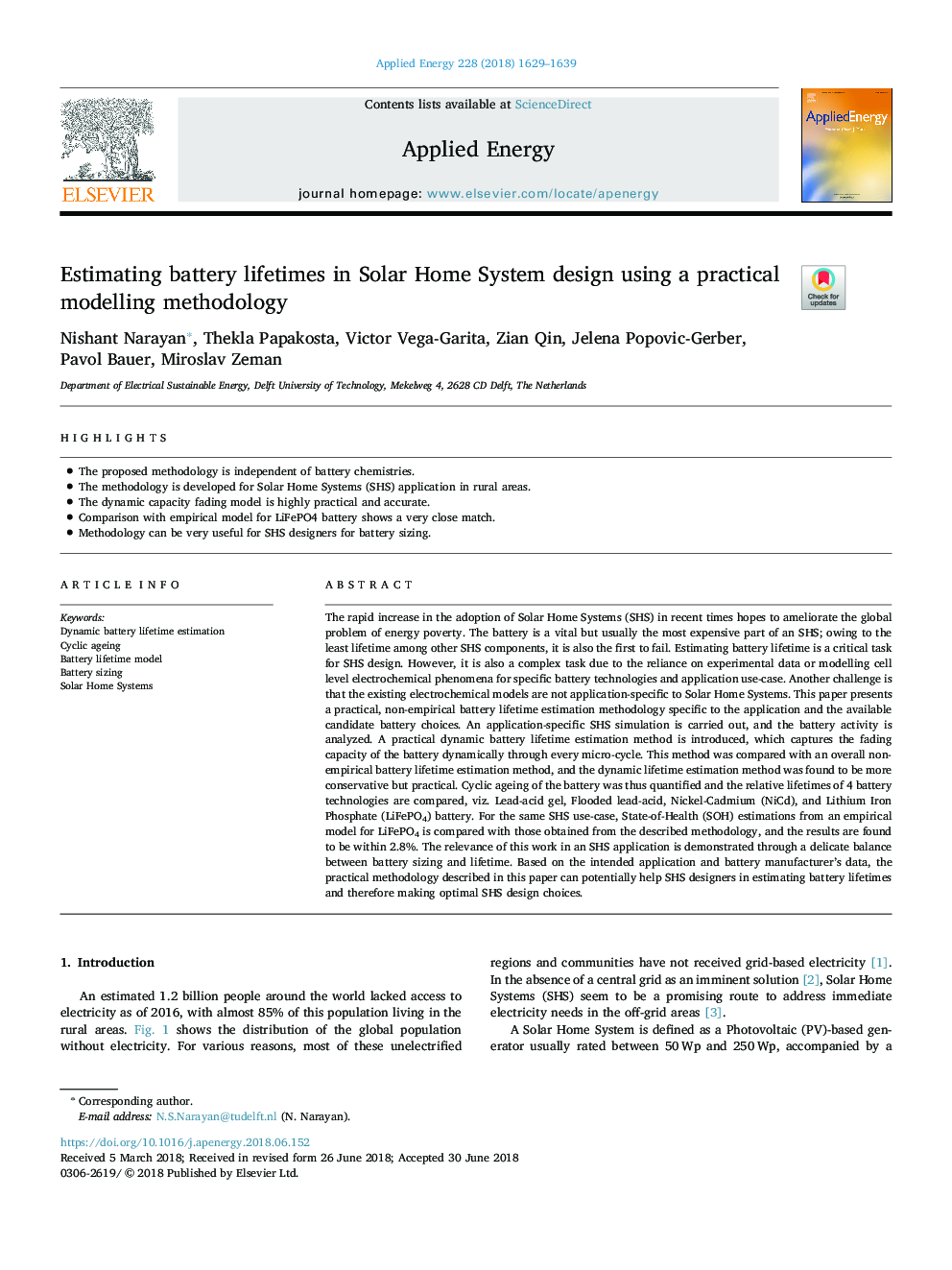| کد مقاله | کد نشریه | سال انتشار | مقاله انگلیسی | نسخه تمام متن |
|---|---|---|---|---|
| 6679869 | 1428063 | 2018 | 11 صفحه PDF | دانلود رایگان |
عنوان انگلیسی مقاله ISI
Estimating battery lifetimes in Solar Home System design using a practical modelling methodology
ترجمه فارسی عنوان
برآورد طول عمر باتری در طراحی سیستم خورشیدی با استفاده از یک روش مدل سازی عملی
دانلود مقاله + سفارش ترجمه
دانلود مقاله ISI انگلیسی
رایگان برای ایرانیان
کلمات کلیدی
برآورد طول عمر باتری پویا، پیری سیکل، مدل عمر باتری، اندازه باتری، سیستم های خورشیدی
موضوعات مرتبط
مهندسی و علوم پایه
مهندسی انرژی
مهندسی انرژی و فناوری های برق
چکیده انگلیسی
The rapid increase in the adoption of Solar Home Systems (SHS) in recent times hopes to ameliorate the global problem of energy poverty. The battery is a vital but usually the most expensive part of an SHS; owing to the least lifetime among other SHS components, it is also the first to fail. Estimating battery lifetime is a critical task for SHS design. However, it is also a complex task due to the reliance on experimental data or modelling cell level electrochemical phenomena for specific battery technologies and application use-case. Another challenge is that the existing electrochemical models are not application-specific to Solar Home Systems. This paper presents a practical, non-empirical battery lifetime estimation methodology specific to the application and the available candidate battery choices. An application-specific SHS simulation is carried out, and the battery activity is analyzed. A practical dynamic battery lifetime estimation method is introduced, which captures the fading capacity of the battery dynamically through every micro-cycle. This method was compared with an overall non-empirical battery lifetime estimation method, and the dynamic lifetime estimation method was found to be more conservative but practical. Cyclic ageing of the battery was thus quantified and the relative lifetimes of 4 battery technologies are compared, viz. Lead-acid gel, Flooded lead-acid, Nickel-Cadmium (NiCd), and Lithium Iron Phosphate (LiFePO4) battery. For the same SHS use-case, State-of-Health (SOH) estimations from an empirical model for LiFePO4 is compared with those obtained from the described methodology, and the results are found to be within 2.8%. The relevance of this work in an SHS application is demonstrated through a delicate balance between battery sizing and lifetime. Based on the intended application and battery manufacturer's data, the practical methodology described in this paper can potentially help SHS designers in estimating battery lifetimes and therefore making optimal SHS design choices.
ناشر
Database: Elsevier - ScienceDirect (ساینس دایرکت)
Journal: Applied Energy - Volume 228, 15 October 2018, Pages 1629-1639
Journal: Applied Energy - Volume 228, 15 October 2018, Pages 1629-1639
نویسندگان
Nishant Narayan, Thekla Papakosta, Victor Vega-Garita, Zian Qin, Jelena Popovic-Gerber, Pavol Bauer, Miroslav Zeman,
